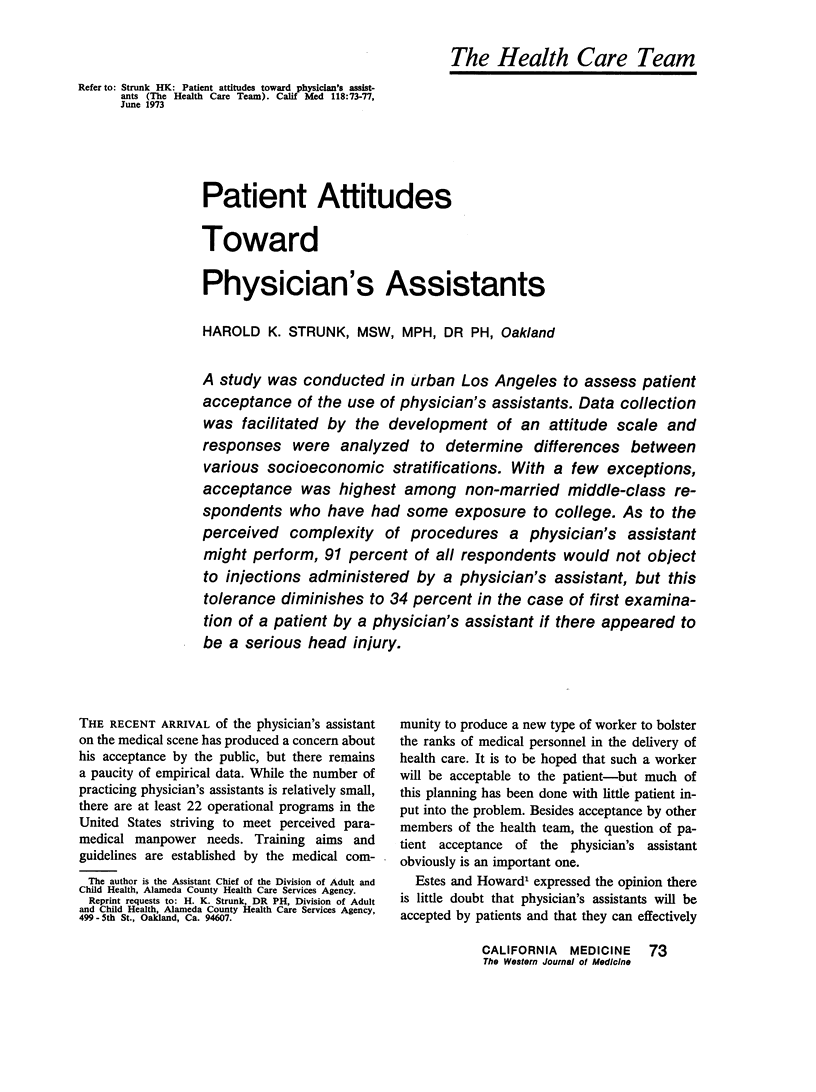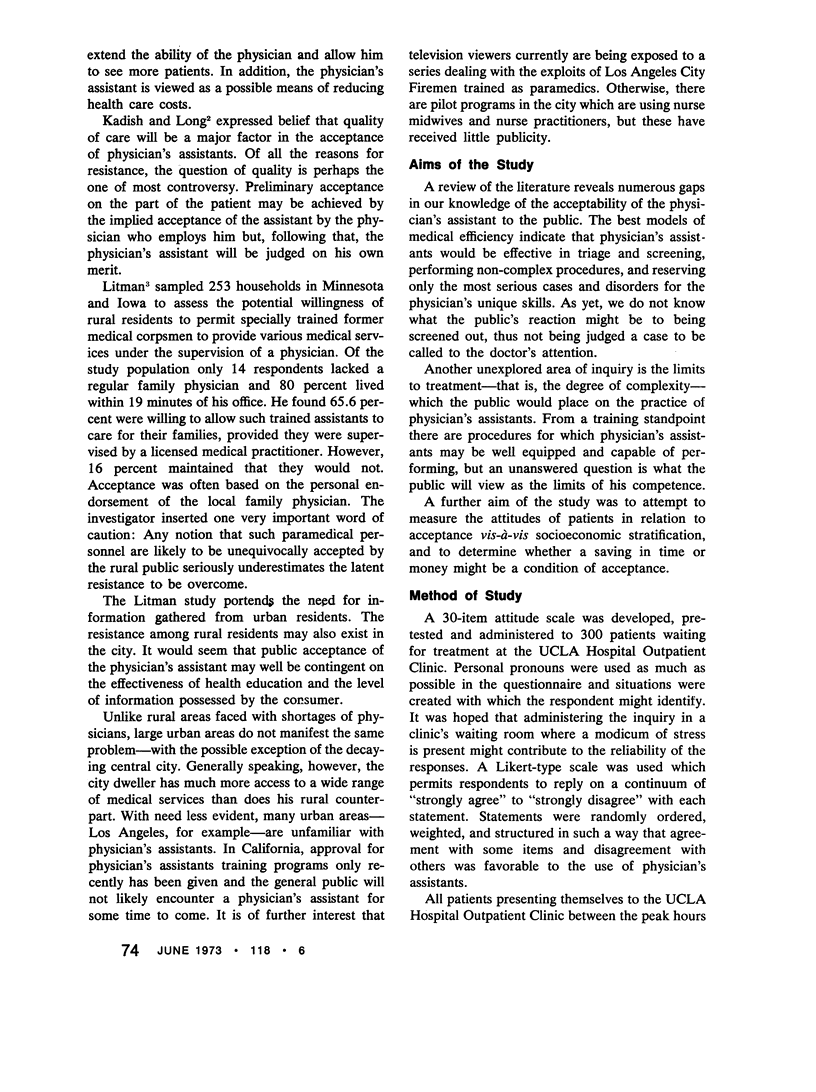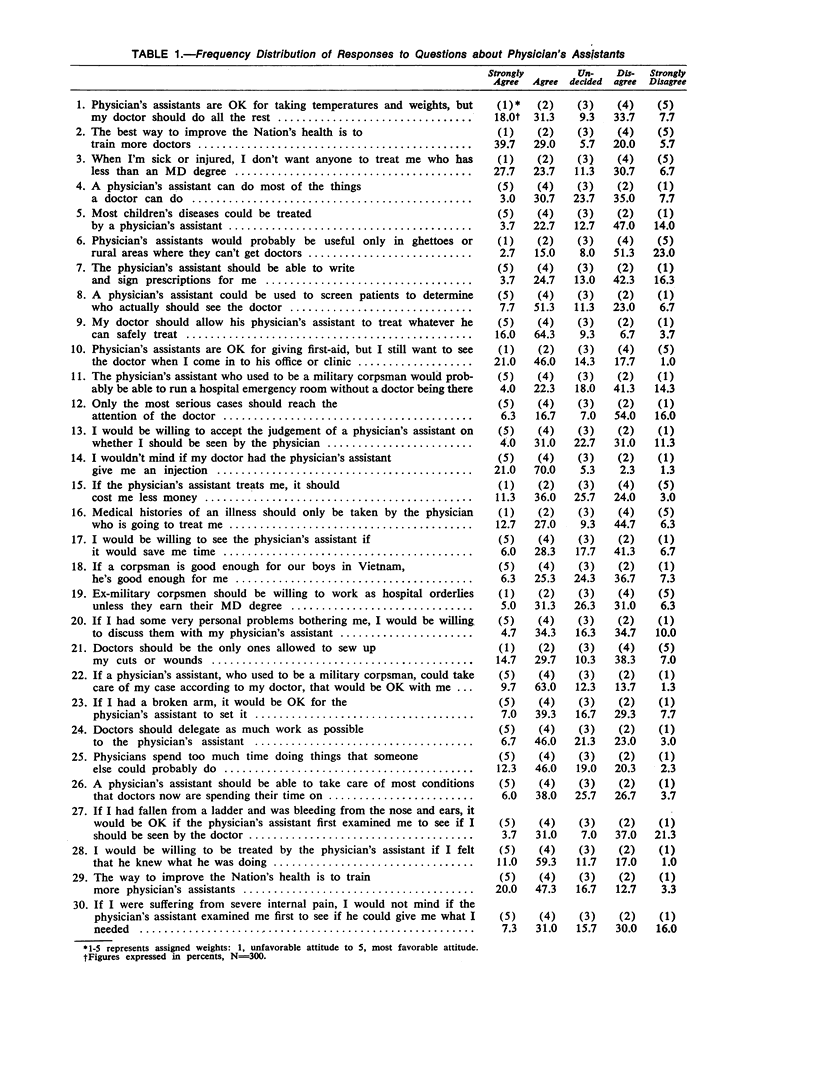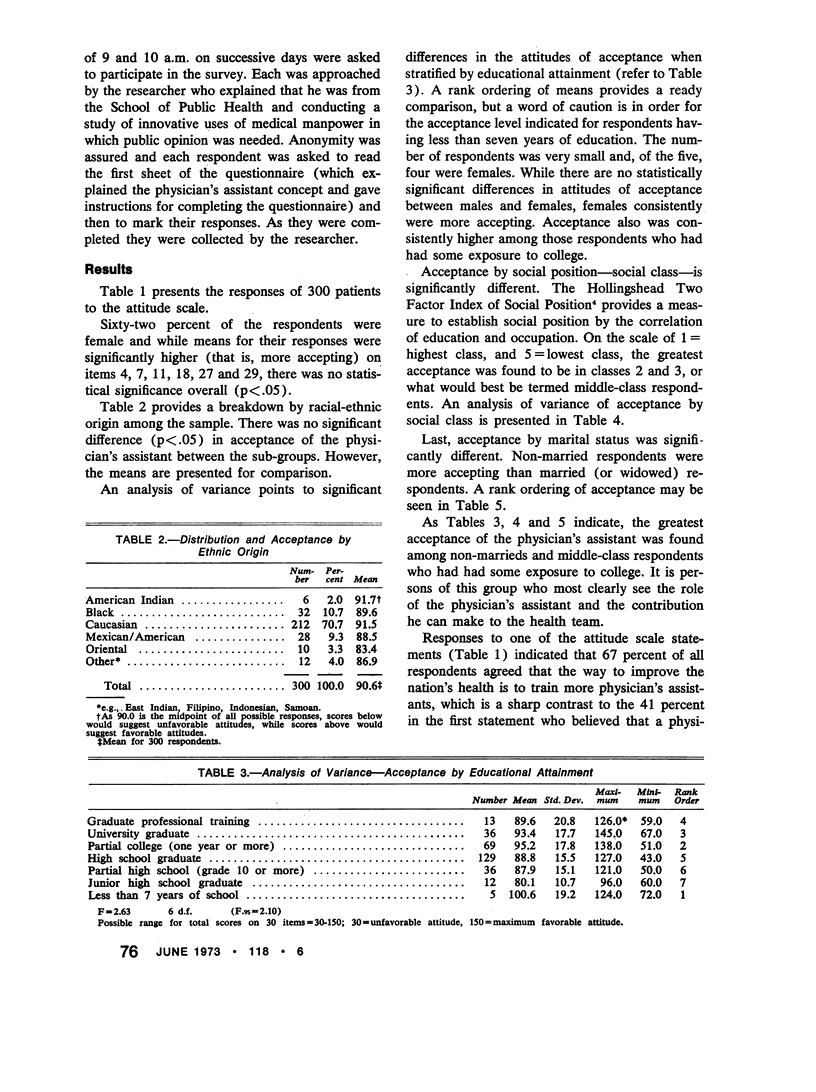Abstract
A study was conducted in urban Los Angeles to assess patient acceptance of the use of physician's assistants. Data collection was facilitated by the development of an attitude scale and responses were analyzed to determine differences between various socioeconomic stratifications. With a few exceptions, acceptance was highest among non-married middle-class respondents who have had some exposure to college. As to the perceived complexity of procedures a physician's assistant might perform, 91 percent of all respondents would not object to injections administered by a physician's assistant, but this tolerance diminishes to 34 percent in the case of first examination of a patient by a physician's assistant if there appeared to be a serious head injury.
Full text
PDF




Selected References
These references are in PubMed. This may not be the complete list of references from this article.
- Estes E. H., Jr, Howard D. R. Paramedical personnel in the distribution of health care. Arch Intern Med. 1971 Jan;127(1):70–72. [PubMed] [Google Scholar]
- Kadish J., Long J. W. The training of physician assistants: status and issues. JAMA. 1970 May 11;212(6):1047–1051. [PubMed] [Google Scholar]
- Litman T. J. Public perceptions of the physicians' assistant--a survey of the attitudes and opinions of rural Iowa and Minnesota residents. Am J Public Health. 1972 Mar;62(3):343–346. doi: 10.2105/ajph.62.3.343. [DOI] [PMC free article] [PubMed] [Google Scholar]


